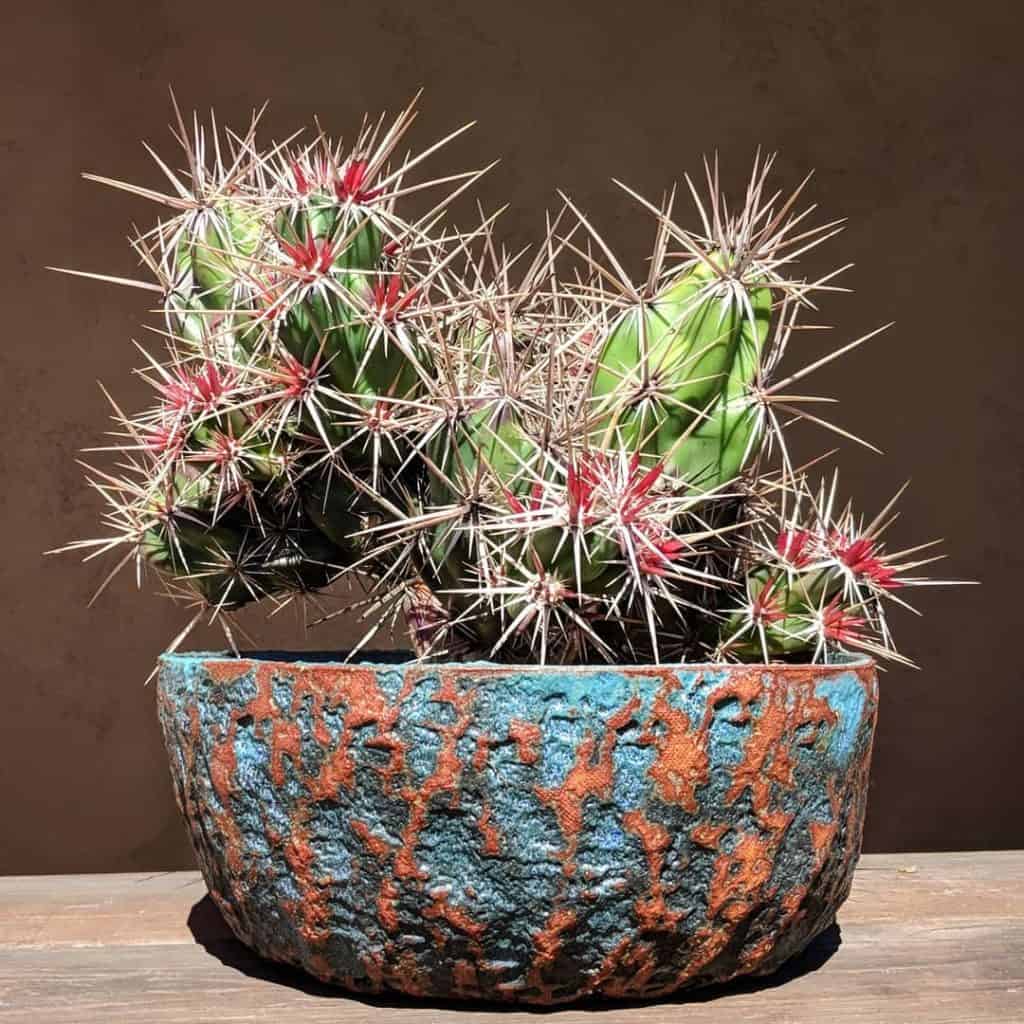Grusonia invicta: A Living Carpet of Daggers You Can’t Ignore
Imagine a cactus so ferocious, it earned nicknames like “devil cholla” and “horse crippler.” That’s Grusonia invicta for you – a mat-forming succulent with wicked spines that will leave you in awe…and maybe a little terrified! But don’t let its prickly exterior fool you. This cactus is a true desert beauty worth getting to know. Keep reading to uncover the secrets of this living carpet of daggers.

Contents
About Grusonia invicta
Native to the Baja California region of Mexico, Grusonia invicta (also known as Corynopuntia invicta) is no ordinary cactus. It grows in a wide mat-like form, roughly 8-20 inches tall and up to 6.5 feet across (or more!). The stout green stems are lined with large, flattened tubercles that give it an otherworldly appearance.
But the real showstoppers are the spines – thick, dagger-like spines up to 2 inches long! They start off reddish-purple with a bright carmine-red base, eventually turning grayish-white and finally black. Between the spines, you’ll find clusters of small, curved red leaves and white woolly areoles.
Despite its fierce looks, this cactus puts on a delightful yellow flower show in late spring. No wonder it’s a prized specimen for cactus enthusiasts and desert gardeners alike!
Related Post:
1,000 Types of Cactus [With Pictures]
How to Care for Grusonia invicta
Light
Like most cacti, Grusonia invicta thrives in full sun. Outdoors, it loves basking in those intense desert rays. If growing indoors, place it near a sunny window or use a grow light to mimic its native habitat. Just be cautious of intense afternoon sun which can scorch its pads.

Water
With its succulent nature, this cactus is drought-tolerant and doesn’t need frequent watering. Only water when the top 4 inches of soil are completely dry. Overwatering is a no-no as it can lead to rot. Well-draining soil is a must to prevent water accumulation.
Soil
For your carpet of daggers to flourish, it needs a well-aerated, fast-draining soil mix. A cactus/succulent potting mix amended with extra grit (like coarse sand or perlite) works best. Aim for a slightly acidic to neutral pH of 6-7.
Fertilizer
Feed your Grusonia invicta with a balanced, diluted cactus fertilizer during its growing season (spring through fall). A slow-release formula is ideal as it provides steady nourishment without overdoing it.
Temperature and Humidity
Hailing from hot, arid climes, this cactus loves warm temperatures between 68-95°F. It can’t tolerate cold below 50°F though, so bring it indoors if outdoor temps dip that low. As for humidity, it prefers drier conditions under 50%.

Pests and Problems
While low-maintenance, a few issues can plague your living carpet:
- Anthracnose disease causes brown spiral spots
- Stem rot from cold damage shows dark gray patches
- Spider mites leave webbing on the undersides of pads
- Aphids cause yellowing, distorted growth
Prune off any affected parts and treat them with the appropriate insecticide or fungicide. Good air circulation helps prevent fungal issues too.
Pruning
These slow-growers don’t need frequent pruning. Just snip off dead flowers and any overcrowded or damaged stem segments to keep it tidy.
Potting and Repotting
Grusonia invicta prefers being somewhat rootbound, so don’t rush to upsize the pot. Allow the roots to fill the container before repotting into one just an inch or two wider. Always use a well-draining potting mix in containers with drainage holes.

Grusonia invicta Propagation Methods
One of the best ways to expand your carpet of daggers is through propagation. Here’s how:
- From Stem Cuttings (allow cut ends to callus over first):
- Use a sharp, clean knife to take 4-6 inch stem tip cuttings
- Allow cut ends to dry for several days until calloused
- Plant cuttings vertically in well-draining cactus soil
- Water sparingly after roots form
- From Seeds:
- Sow seeds shallowly in seed-starting mix
- Cover barely with soil and mist to lightly moisten
- Provide bright light and bottom heat to aid germination
- Pot up seedlings once they have a few sets of spines
With the right care, your carpet of daggers will slowly spread, creating an eye-catching desert landscape right in your own garden! Just mind those spines…
